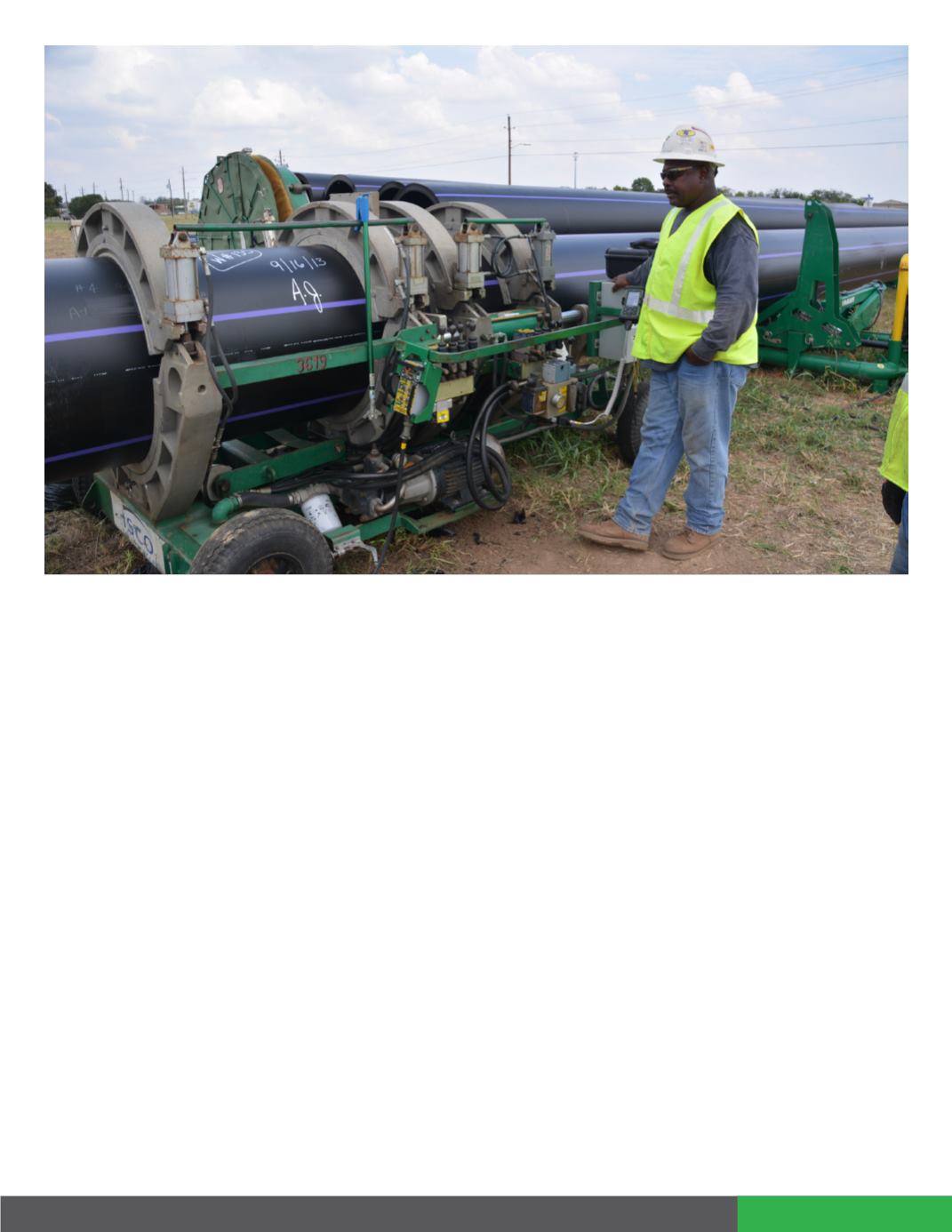
102 Business View - February 2016
INFRASTRUCTURE
were to the point where we did not allow any outside ir-
rigation whatsoever. That lasted for about a year and a
half. A lot of people lost trees, a lot of people lost their
lawns; but we had to do it. Our average water use pri-
or to the drought was about 35 million gallons a day;
we’d see peaks as high as 52 or 53 million gallons and
sometimes as low as 17 or 18 million, depending on
the time of year, but the average ran about 35 million.
Our average water use during the drought and during
the restrictions was less than 11 million gallons a day.
So our conservation efforts really paid off.”
But conservation, though important, was not enough.
By 2012, it became apparent to Barham and his col-
leagues that another source of potable drinking water
would have to be found. The city looked to its third re-
maining lake, Lake Kemp, for the answer. “Lake Arrow-
head and Lake Kickapoo are two of the three water
sources for the city,” he says. “We have a third source
– Lake Kemp. In 2006, the city decided to build a mi-
crofiltration/reverse osmosis (MF/RO) plant in order
to treat Lake Kemp water because Lake Kemp is very
salty. So that brought on a third source of water, when
that project went live in late 2008.”
The city figured that if the MF/RO plant could be uti-
lized to sanitize water other than what came out of
Lake Kemp, for instance, wastewater that the city fil-
tered at its wastewater plant some 13 miles away and
routinely returned to the Wichita River where it flowed
into the Red River, and finally into Lake Texoma, one of
the largest lakes in the country, it could make up for
the shortfall and provide enough clean and sanitary
drinking water for the citizens of Wichita Falls.
“We had some old plans that had been put on the shelf
back in the early 2000s, when we went through a pre-
vious drought, but not nearly as bad as the drought of
2010-15,” says Barham. “At that time, the City Council
considered using wastewater as another source of wa-


